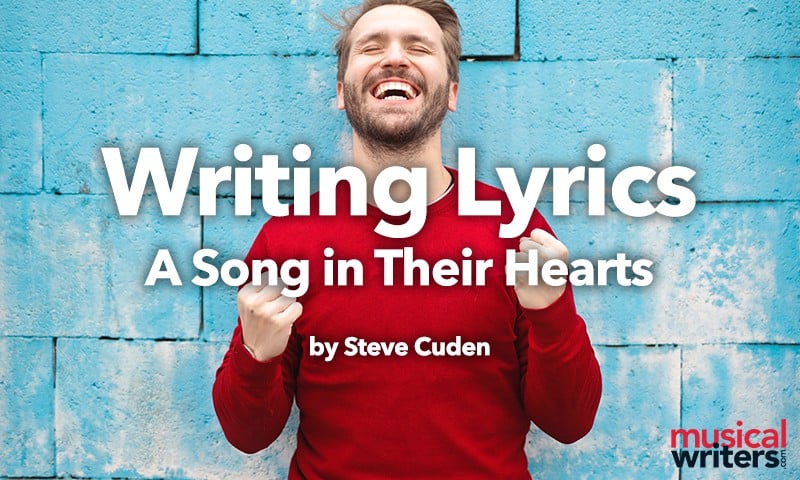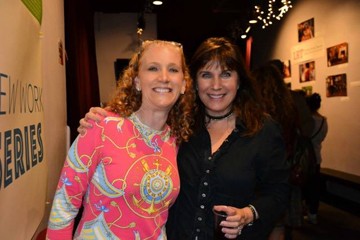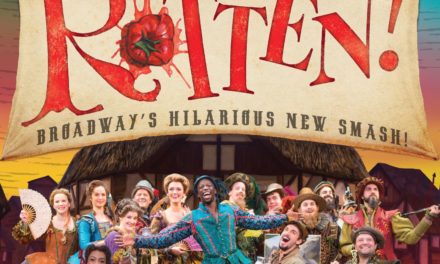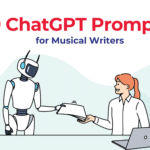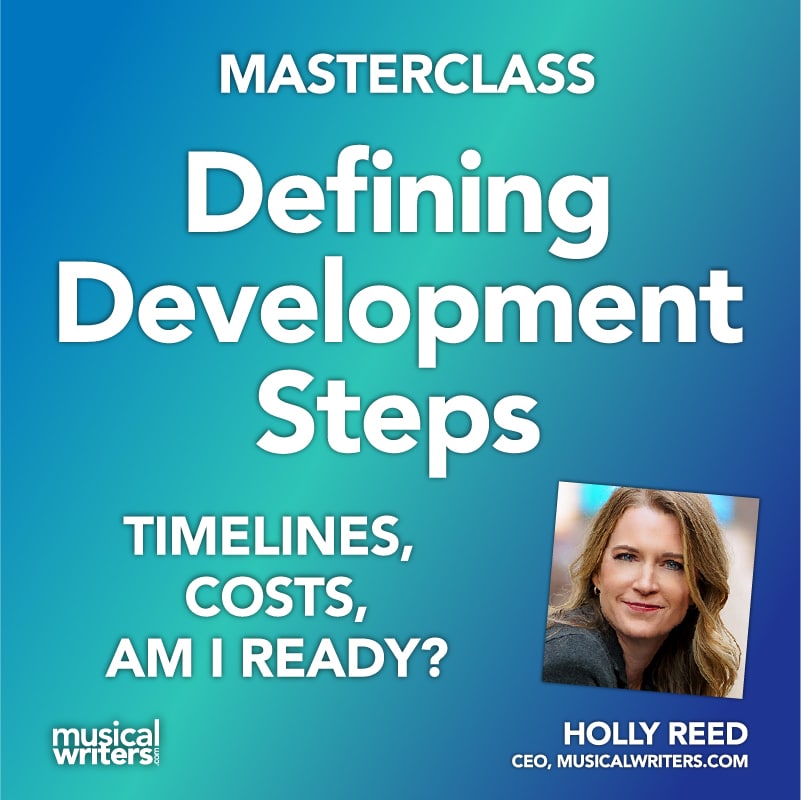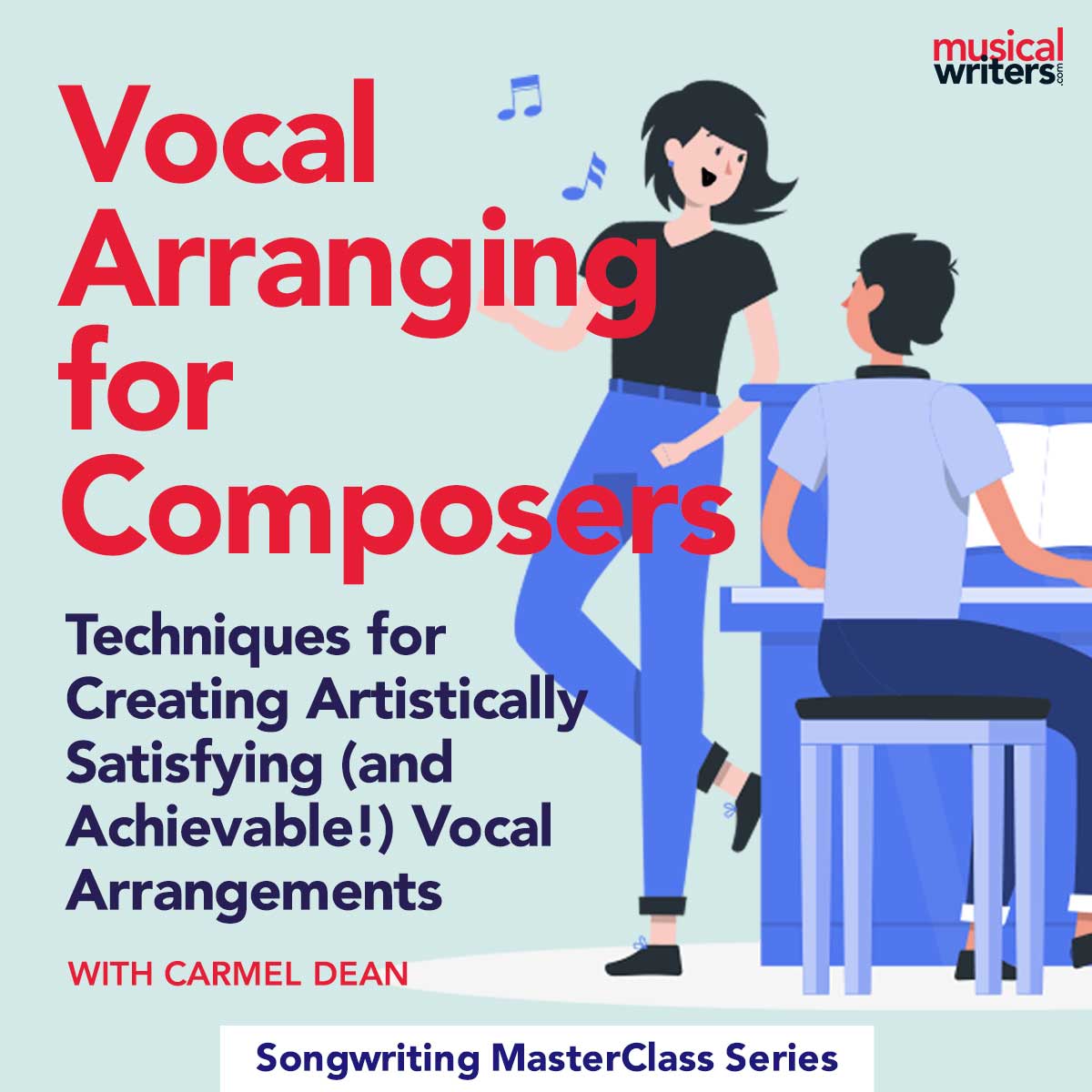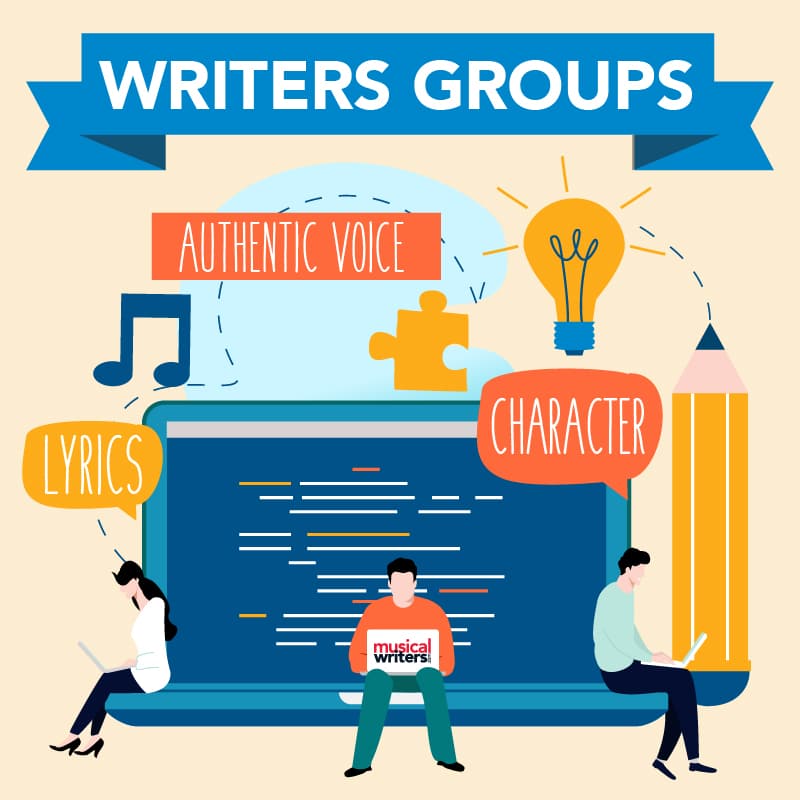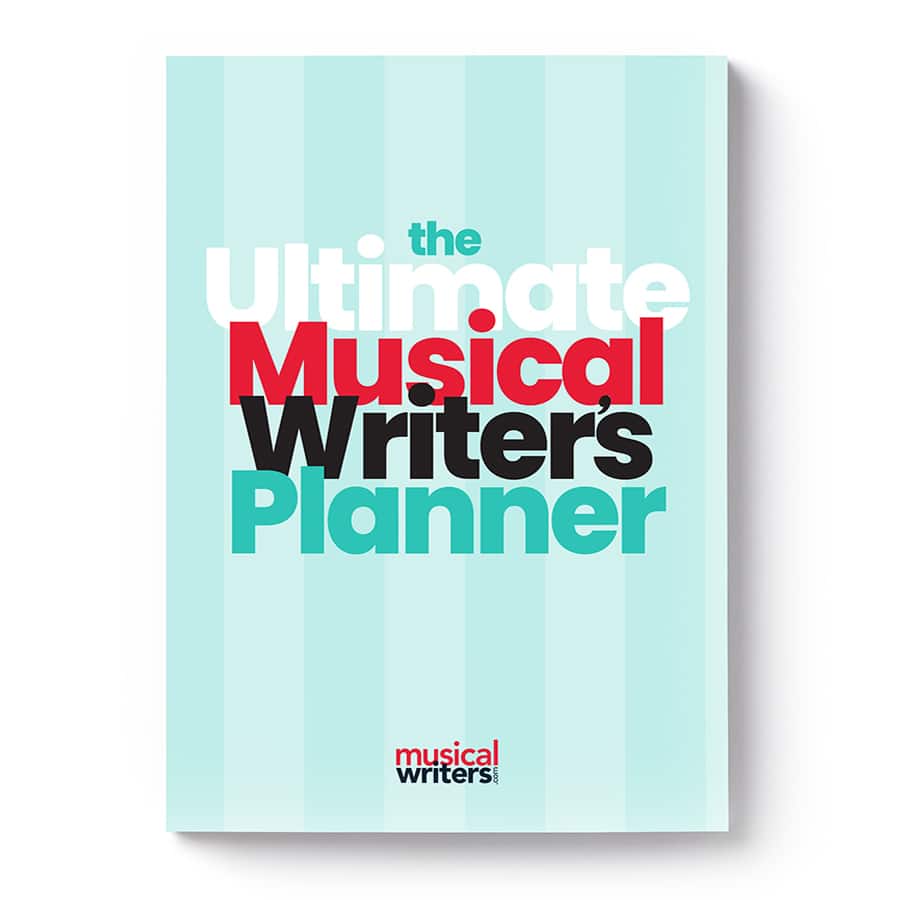In this guest post about writing lyrics, Steve Cuden offers his perspective on the kinds of storytelling best suited for show tunes. For anyone refining their lyric writing skills, or for those new to writing lyrics for musicals, Cuden brings up some important considerations.
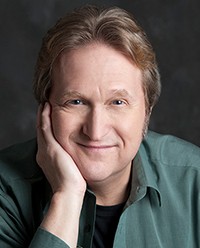
Lyricists sometimes become infatuated with their own words and how cleverly they can tell the tale in rhyme. Songs in musicals written by newer artists often work too hard to explain the backstory or plot details or character descriptions. Unless a musical is mostly sung-through, lyricists would be well advised to avoid detailing the plot or much of the exposition via the songs. In most memorable, popular musicals the songs more often than not act to expand our understanding of the inner emotions, concerns, and lives of the characters – particularly (though not always) those of the principal characters. Audiences prefer hearing songs about what the characters are feeling, not about what they are doing.
Novels are excellent vehicles for revealing the inner thoughts and emotions of the characters. Novelists are able to become omniscient narrators who can seamlessly tell the reader what a character thinks and feels. But few musicals are narrated. Rather, they are dramatized through dialogue and song. Audiences are not good at reading the characters’ minds. Unlike novels, the audience is only able to understand that which can be seen and heard. That means writers of dramatic works, whether for stage or screen, are limited in how they divulge the internal thoughts of the characters so readily offered in literature. The audience must be able to hear or see those thoughts or inner dialogues. In musicals, these are usually best conveyed aurally through song, and visually in the staging or choreography.
Writing Lyrics to Express Emotions
The beauty of musicals, as opposed to non-musical dramatic works, is in how songs are able to transcend the surface of a character’s actions and words and dig down deeply into a his or her inner psyche. A character that speaks a line about their “feelings” might seem cloying or too on-the-nose. But those very same sentiments may be more easily accepted by an audience when expressed in lyrics. That is what lifts the songs in musicals to a special resonant place in the theater.
No doubt dialogue can deliver the same emotional impact as songs (it happens all the time in plays, movies, and TV shows), only songs can get us there so much more efficiently. A commonly held belief is that when a character sings in a musical it means that the emotion is too strong to be merely spoken, but this doesn’t always hold true. There are no rules on any of this, but musical storytelling works best of all when the book, music, and lyrics act in concert to simultaneously move story forward while expanding our understanding of the characters’ inner emotions. Songs are particularly well suited to convey a character’s emotions, be they on the surface or very deep, and often do so in a far more potent manner than via dialogue alone. This is because music is absorbed through the ears straight into the heart and soul. In short, music makes all those emotional words easy to grasp and feel.
The problem usually begins when writers set out to determine which pieces of the story to musicalize and which parts to write as dialogue or “book.” Writing believable emotions, whether through dialogue or lyrics, can be challenging to get right. So, lyricists may simply set out to write the obvious part instead—the plot. But that can easily wind up seeming clunky, and can quickly become dull and uninteresting when set to music.
Exceptions
Of course, there are excellent examples that defy this notion: Les Misérables, Sweeney Todd, and Evita, come to mind. In the “Prologue” of Les Misérables, Valjean’s background as a petty thief is explained and the men discuss breaking the law. This sets up Valjean’s story and the emotions that will propel him to flee captivity. In the opening “The Ballad of Sweeney Todd” the company reveals much about who Sweeney is and a bit about his backstory, but not too much about the emotions underpinning his tale. Or consider the opening of Evita in which we learn that Eva Peron has died and of the impact that Evita had on Argentina during “Requiem for Evita/Oh What a Circus.” These three opening songs are at least as expositional they are emotional. But the above-mentioned shows, and various others like them, are heavily sung-through, so the lyricists have no choice but to use lyrics to carry the story, often as recitative. Each of these examples provides a master class on how to effectively use lyrics to divulge information, plot, and the emotions of the characters via song.
Writing Lyrics using Exposition or Revelation of Feelings
Of course, those shows are more the exception than the rule. Most shows are written with fairly equal doses of dialogue and songs. That way the songs don’t need to cover so much of the story. The opening of Oklahoma is a perfect example. When Curly sings, “Oh, What a Beautiful Morning,” he is singing about what a glorious feeling he has about the day to come. This will prove to be a poor prognosticator of his near future, but an accurate measure of his emotions at the top of the show. When Henry Jekyll opens Jekyll & Hyde by singing “Lost in the Darkness,” it is a solemn consideration of his deep concern about patients suffering from madness. This establishment of Jekyll’s emotional journey is punctuated at song’s end by a key story motivation – the revelation that the hospitalized madman he is visiting is his own father.
In most musicals, the book ought to set up and support brilliant, lyric-filled songs that, in turn, set up and support the equally luminous book. That wheel ought to smoothly turn round and round to create an integrated whole that we enjoy as a complete “musical story.” If your songs don’t seem to be working well ask yourself if your lyrics are trying to serve as exposition or plot, and if maybe the dialogue would be better suited to handle such information. Ask yourself how the songs can better serve the characters and their deepest inner thoughts, feelings, and emotions. As you craft your musical’s book to tell an excellent tale look for those perfect places for writing lyrics which unleash the characters’ emotions—and not the plot.
Successful writing to you all!
Order Beating Broadway: How to Create Stories for Musicals That Get Standing Ovations

